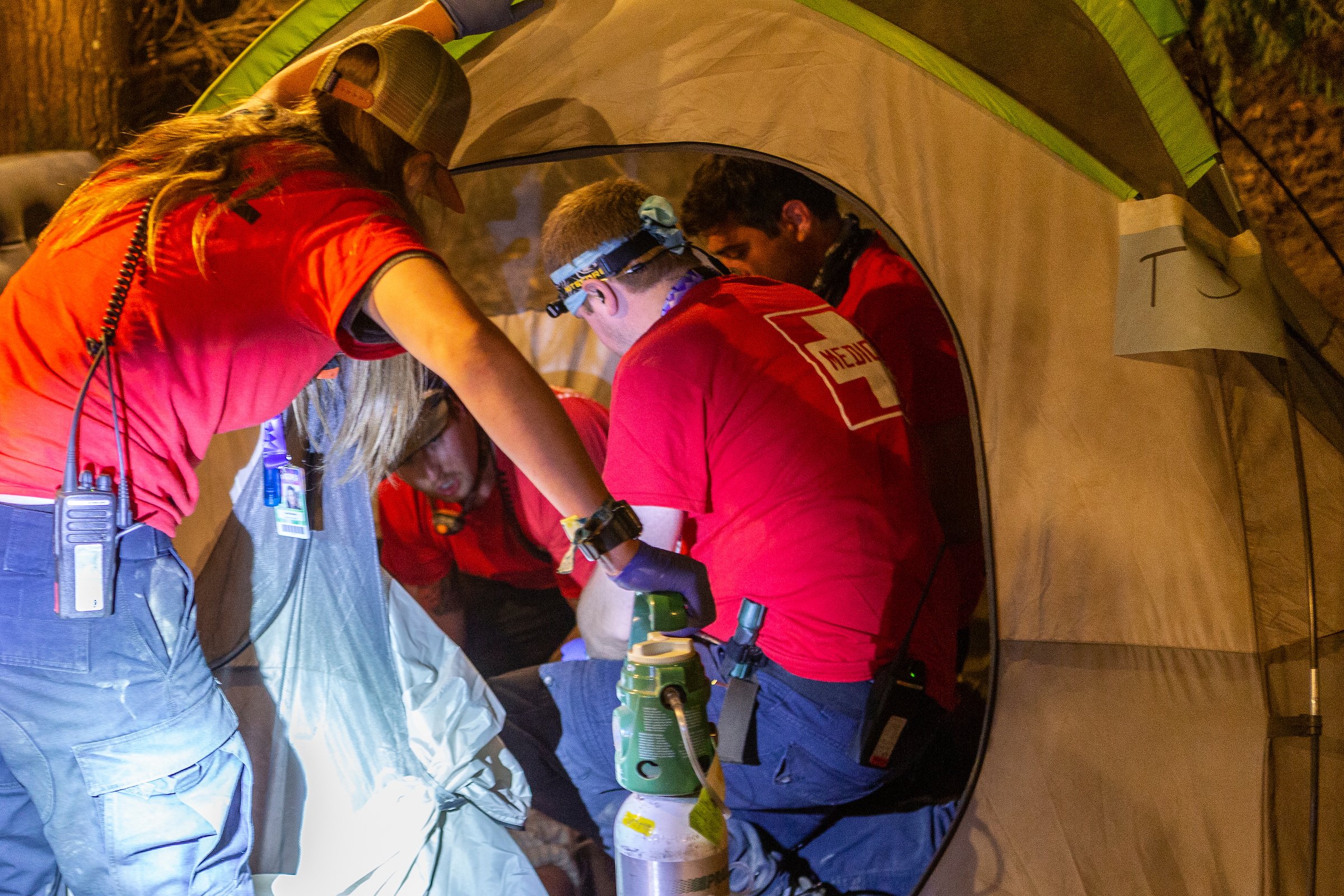
Critical On Scene Interventions
Quick Hits
An approach to critical interventions while on scene at music festivals
Author: Dr. Brendan Munn
© Allen McEachern
Background
Treating patients on scene at music festivals (MFs) has a number of environmental challenges from a clinical, pre-hospital perspective. Cases require quick thinking and management in a stressful treatment space that can often be hostile to care provision due to complex patient locating, darkness, noise, crowding or other considerations. Emergencies at MFs can occur on the dance floor, at food vendors, in a camping area, in natural hazards such as water or forest, or other unique out of hospital environments. These MF-specific difficulties are compounded for critical cases where time is of the essence; common cases in this space include seizures, coma, agitation, anaphylaxis, trauma, asthma and chest pain. Finally, this population is poorly studied and best practices are supported more by experience than definitive evidence.
Critical Interventions at Music Festivals
The concept of just doing key interventions for a specific population is taken from the TCCC (Tactical Combat Casualty Care) model created for battlefield trauma. It focuses on high-yield, life-saving interventions specific to a specific locale using the MARCH mnemonic summarized in Table 1. This can be applied at MFs as presentations typically follow foreseeable patterns with specific needs. The objective is to quickly and effectively choose amongst treatment options likely to confer benefit following the ABCDEs (see Table 2), then transport rapidly to a central facility. As the majority of calls are related to intoxication, the most common and important interventions on scene are good, deep stimulation and proper placement in recovery position. The speed at which interventions can be administered to patients in the festival environment likely has a major impact on outcomes. It is therefore important to focus on training those non-medical personnel who will be a first point of contact in basic interventions, on designing locating protocols to attend to calls as quickly as possible, and on training mobile medical responders in advance on approaches to interventions including the potential for toxicological cardiac arrest.

